Tiny houses, big message

Every Sept. 1 in Boston, thousands of people—whether moving into a residence hall or a new apartment—see how much they can fit into a moving truck. But, what about moving into a moving truck? For Northeastern alumni Derek Diedricksen and Alex Eaves, that 120-square-foot living space is more than enough.
Photos by Matthew Modoono/Northeastern University
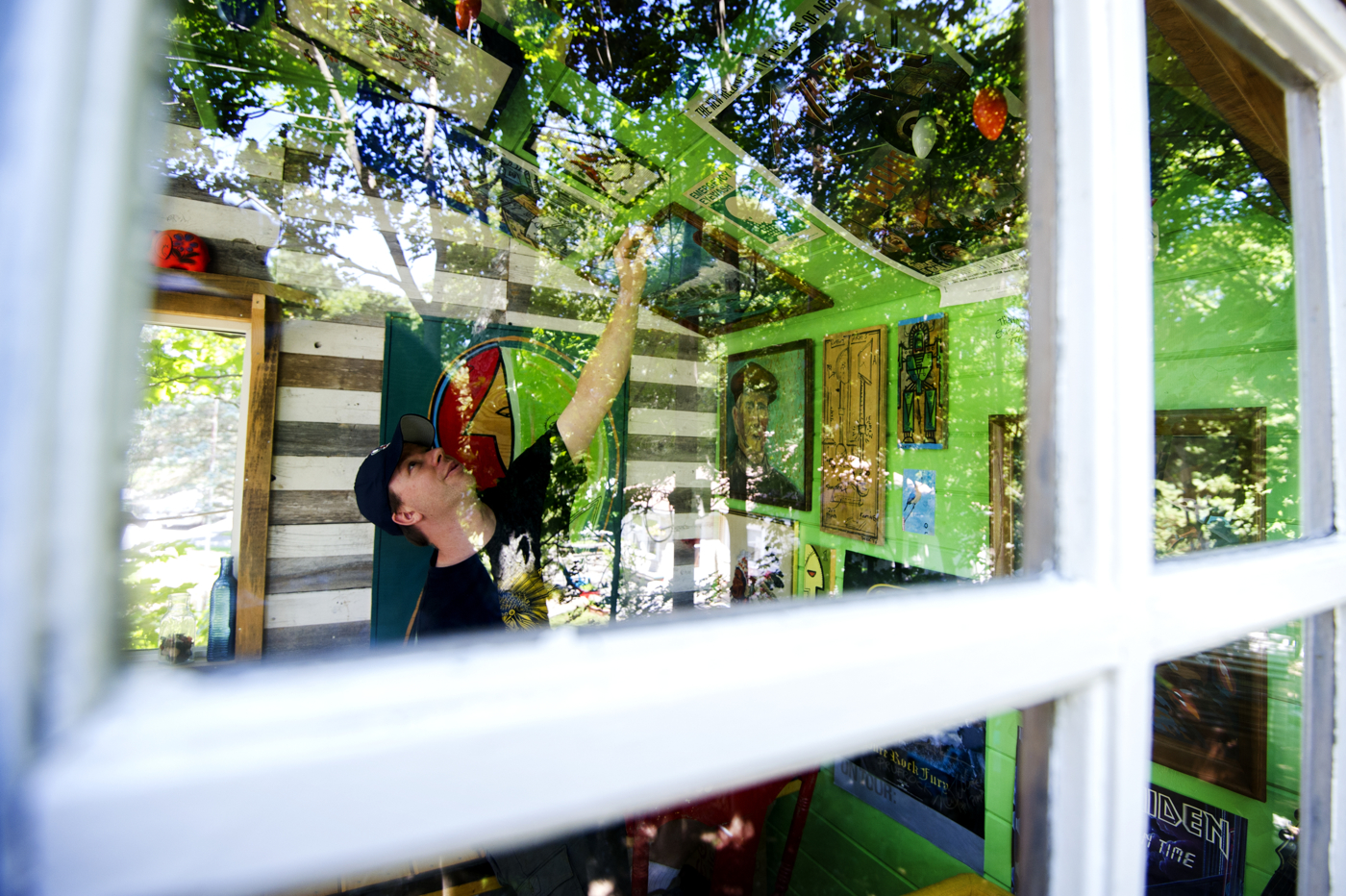
Diedricksen, AS’00, whose friends call him “Deek”, is a tiny house builder and former host of HGTV’s Tiny House Builders. His latest project, with his friend, Eaves, AS’00, is building an abode in the back of a moving truck. Eaves, a filmmaker, is creating a documentary about the building process. He’ll be able to travel the country to showcase the film without leaving the comfort of home.
“I love the simplicity of it,” Diedricksen said, surveying the box truck living quarters one afternoon at his home in Stoughton, Massachusetts. “Plus, it solves an essential problem to start with a waterproof shell,” he added, laughing.
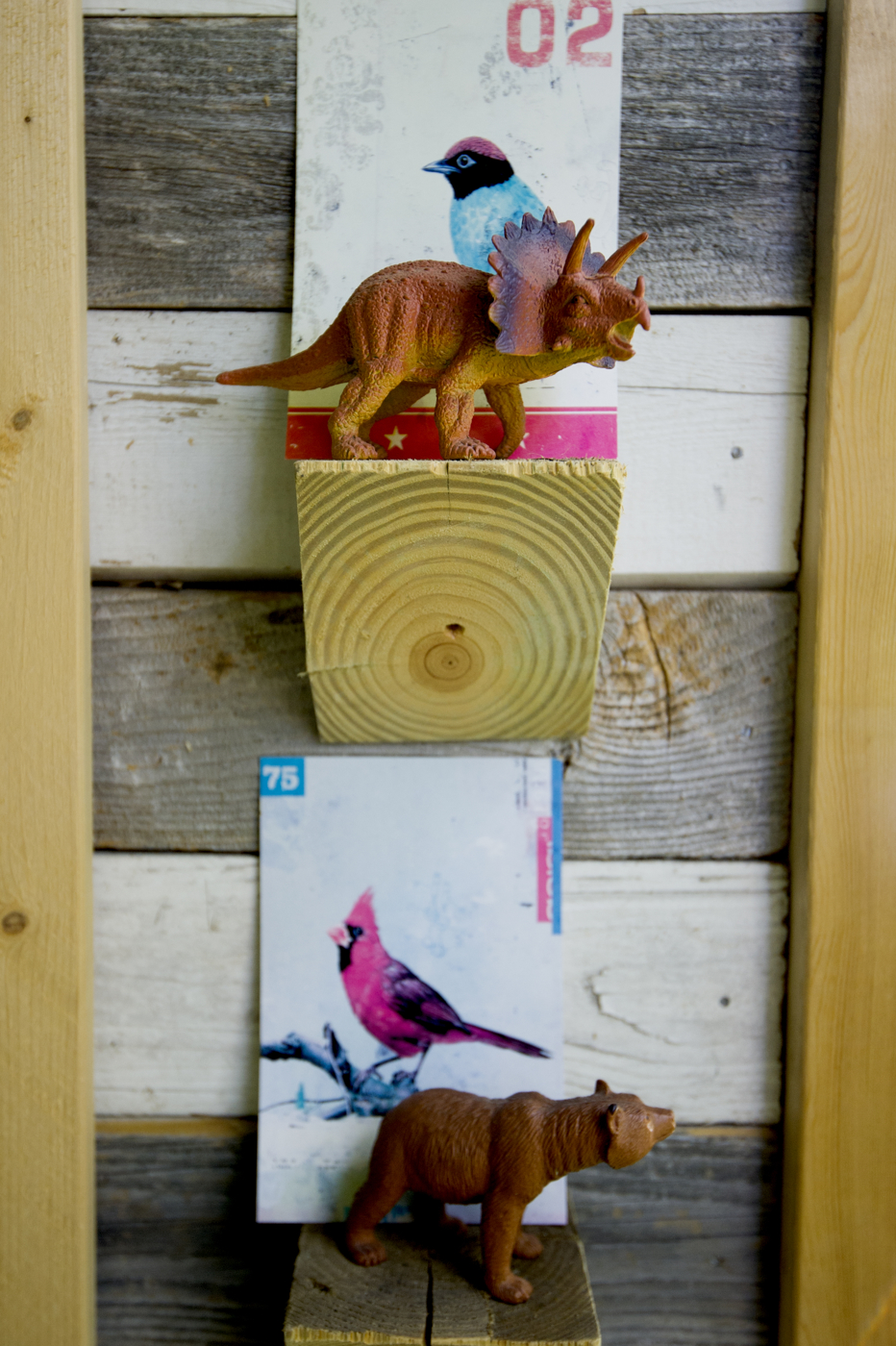
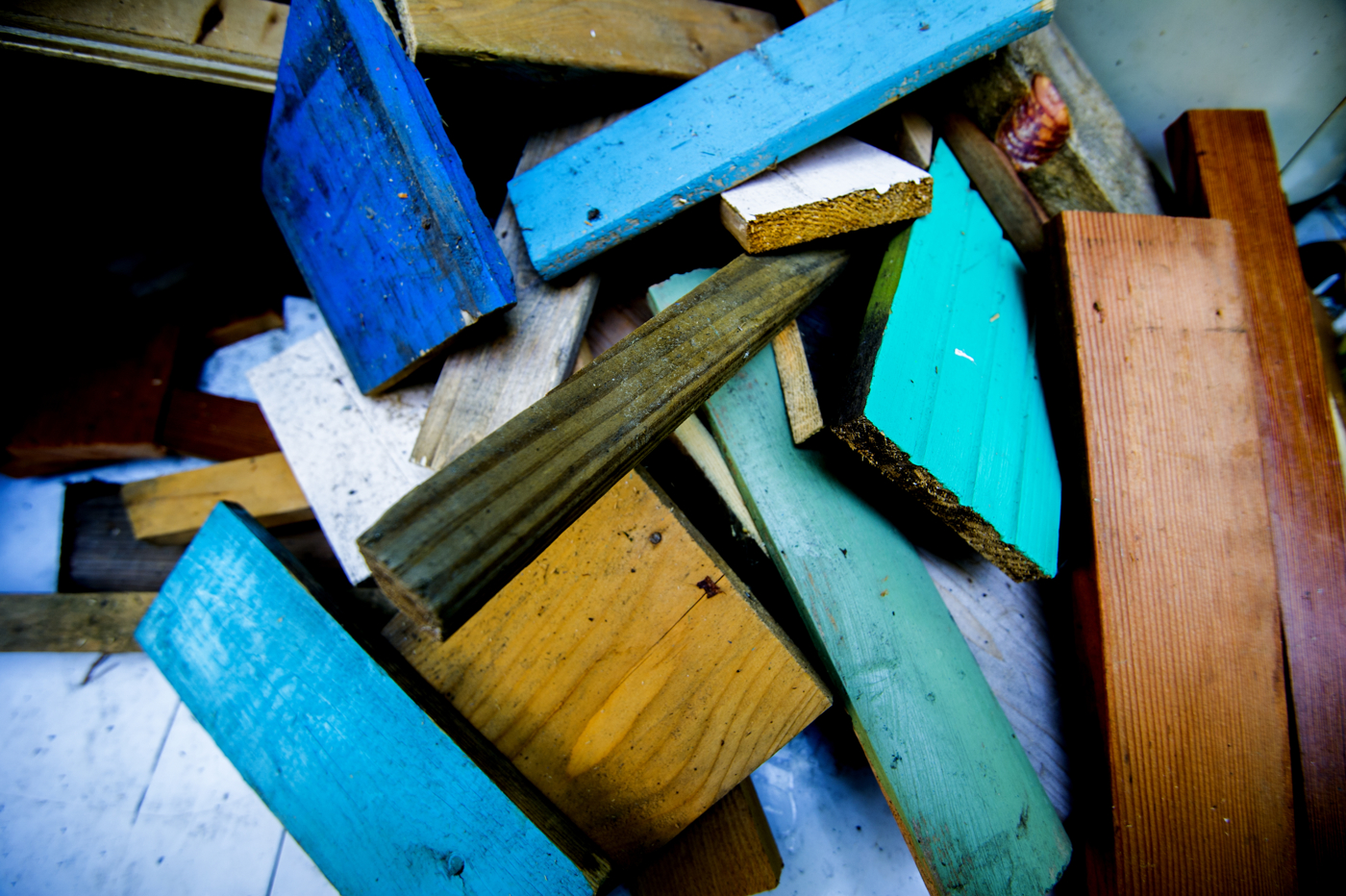
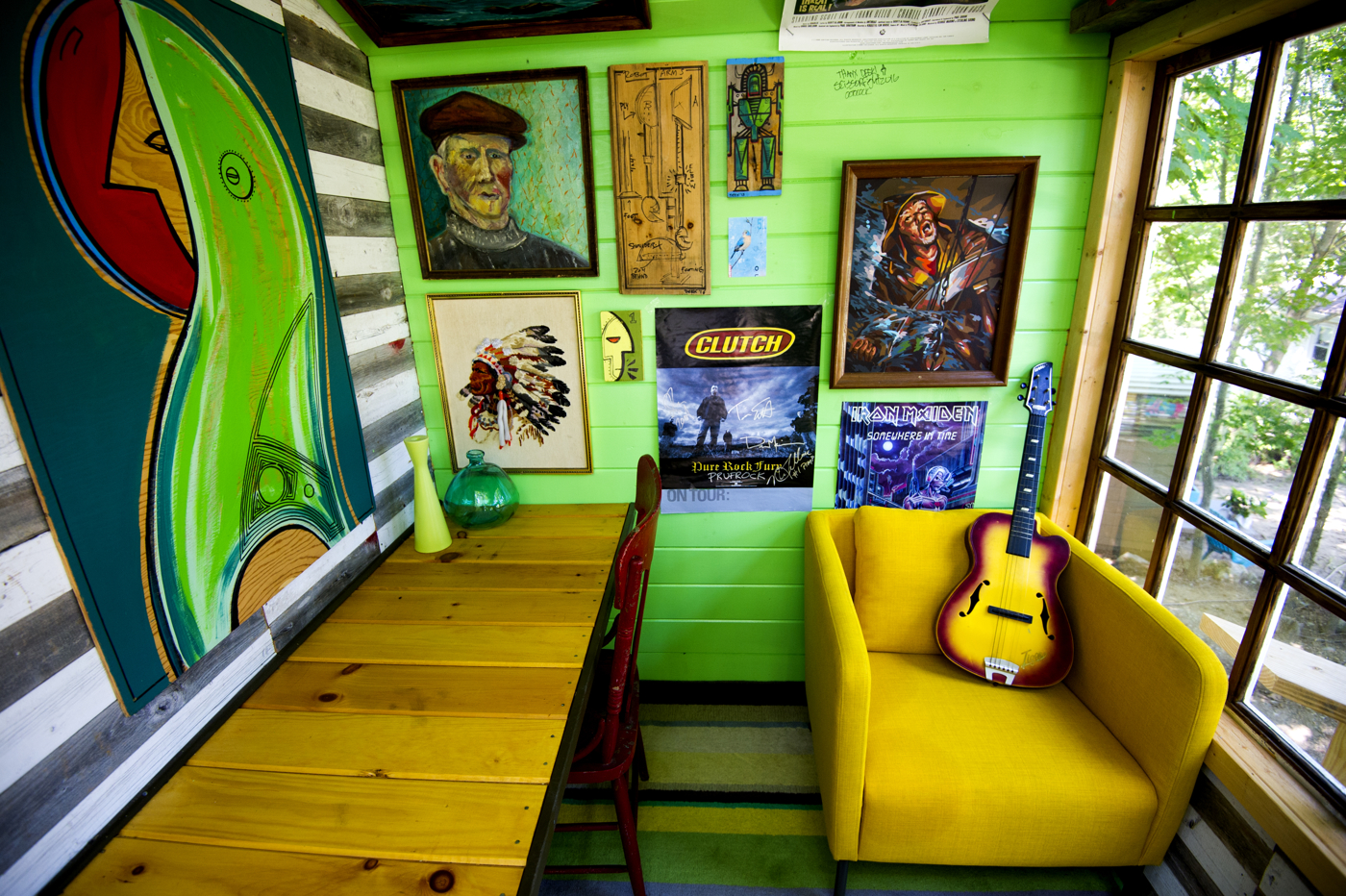
Much of Diedricksen’s builds are more puzzle than rote construction. He makes a point to use recycled or found materials instead of buying new materials every time he builds a tiny home.
The moving truck house, for example, has hardwood floors donated by the owner of a local doughnut shop that was closing. The door handle to the bathroom is a skateboard truck, and the handle to a closet is made of Lincoln Logs. An antique canning and jarring cupboard serves as Eaves’ bureau. A lobster pot is the sink.
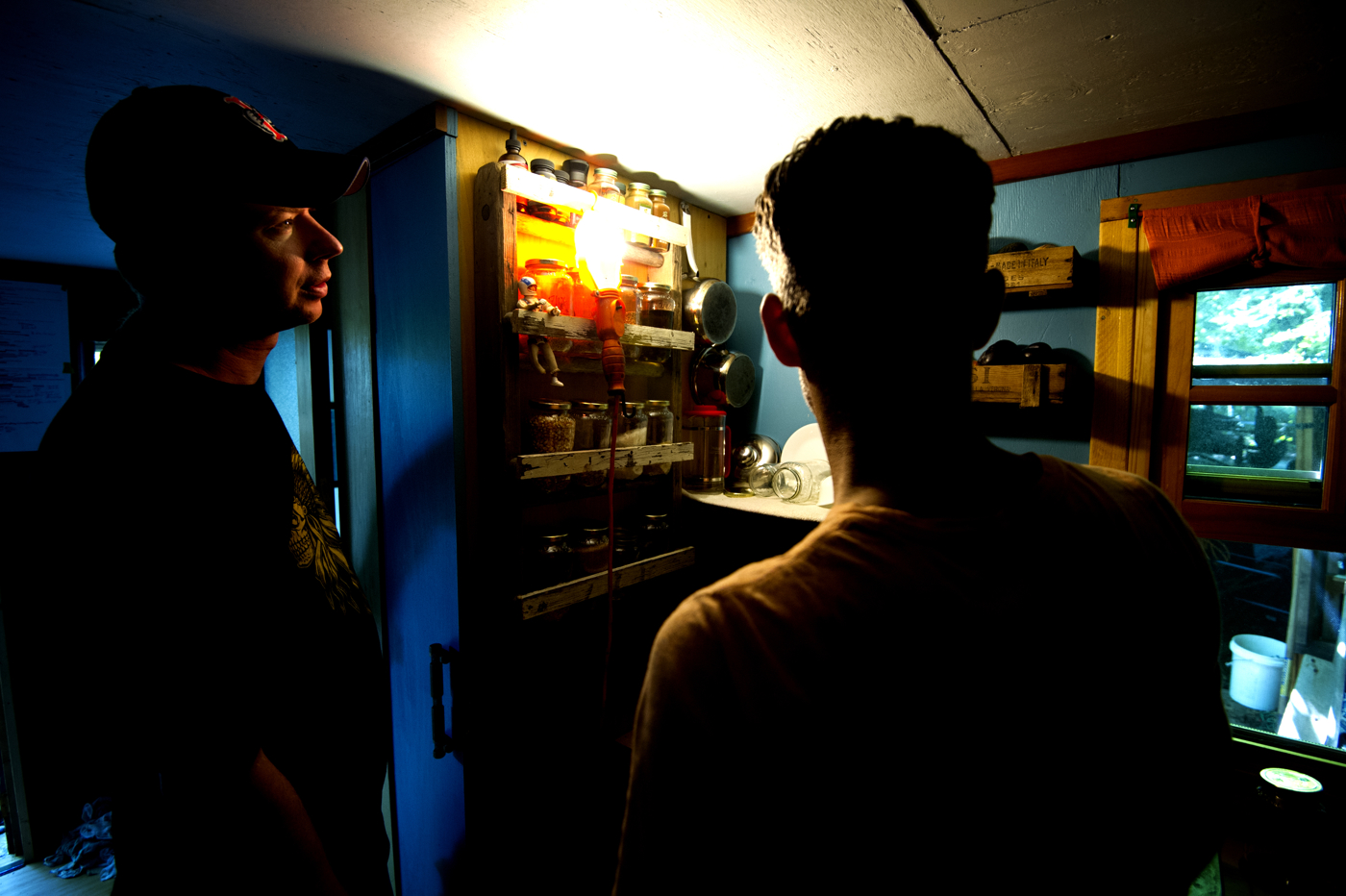
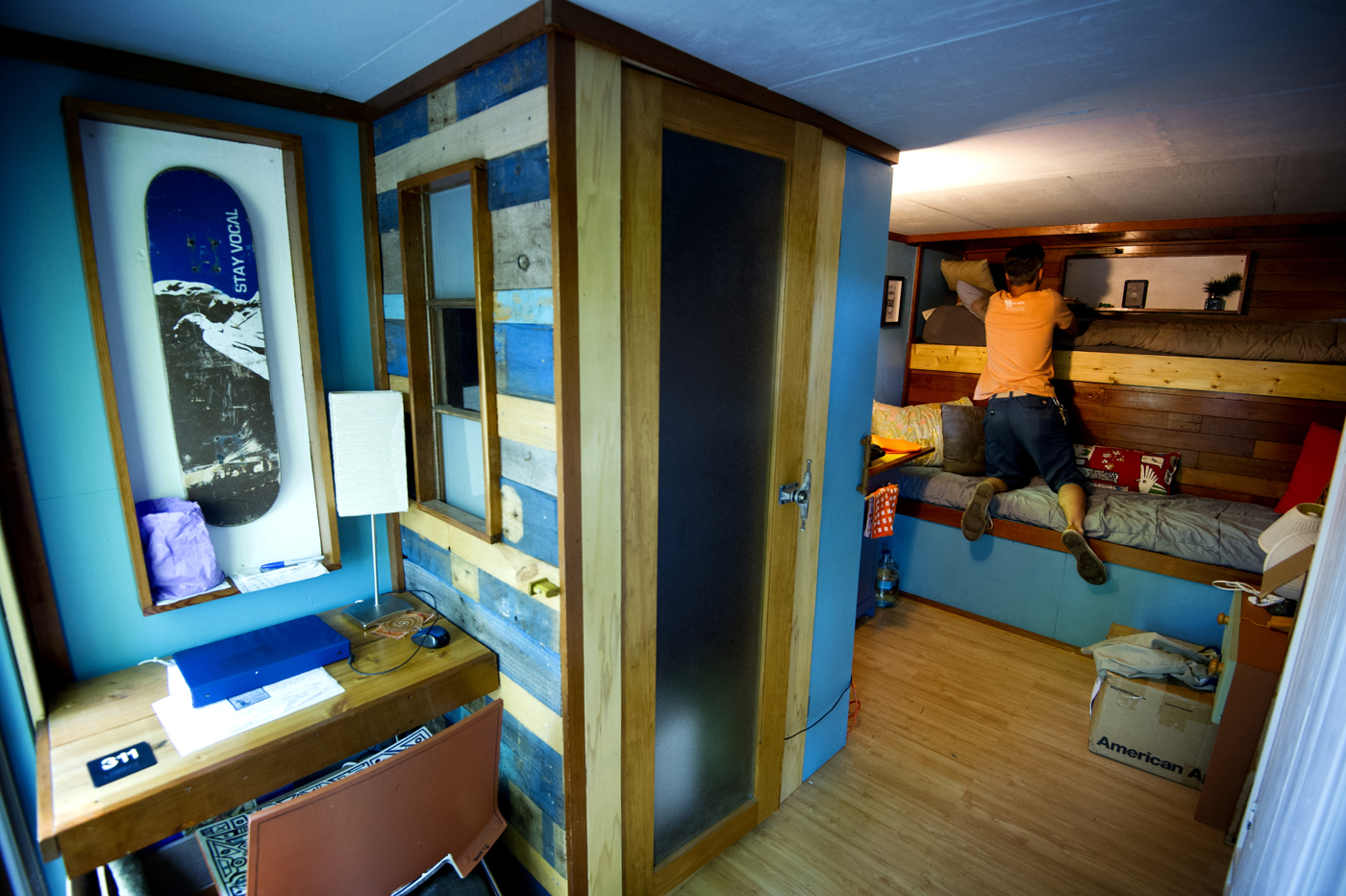
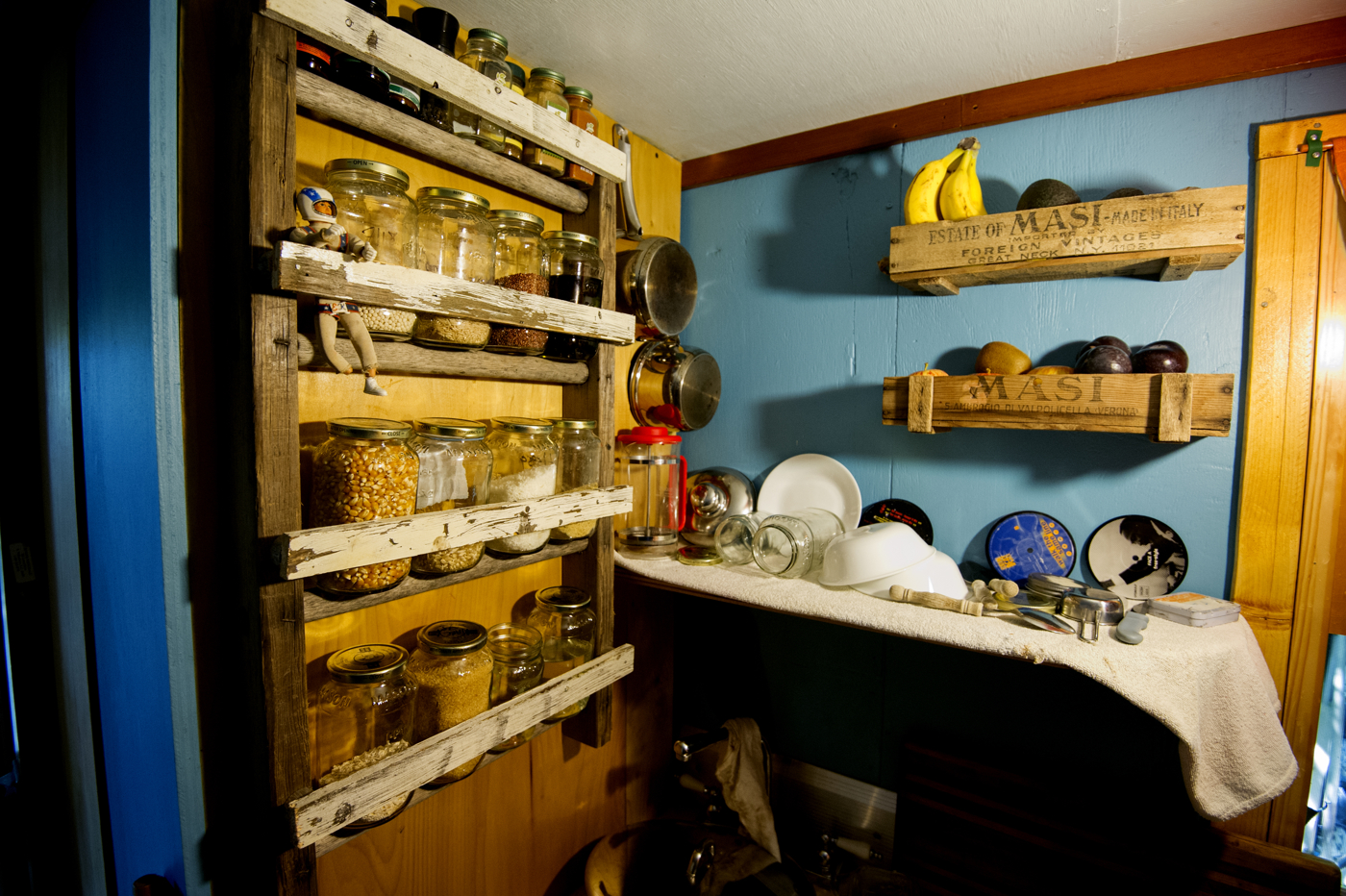
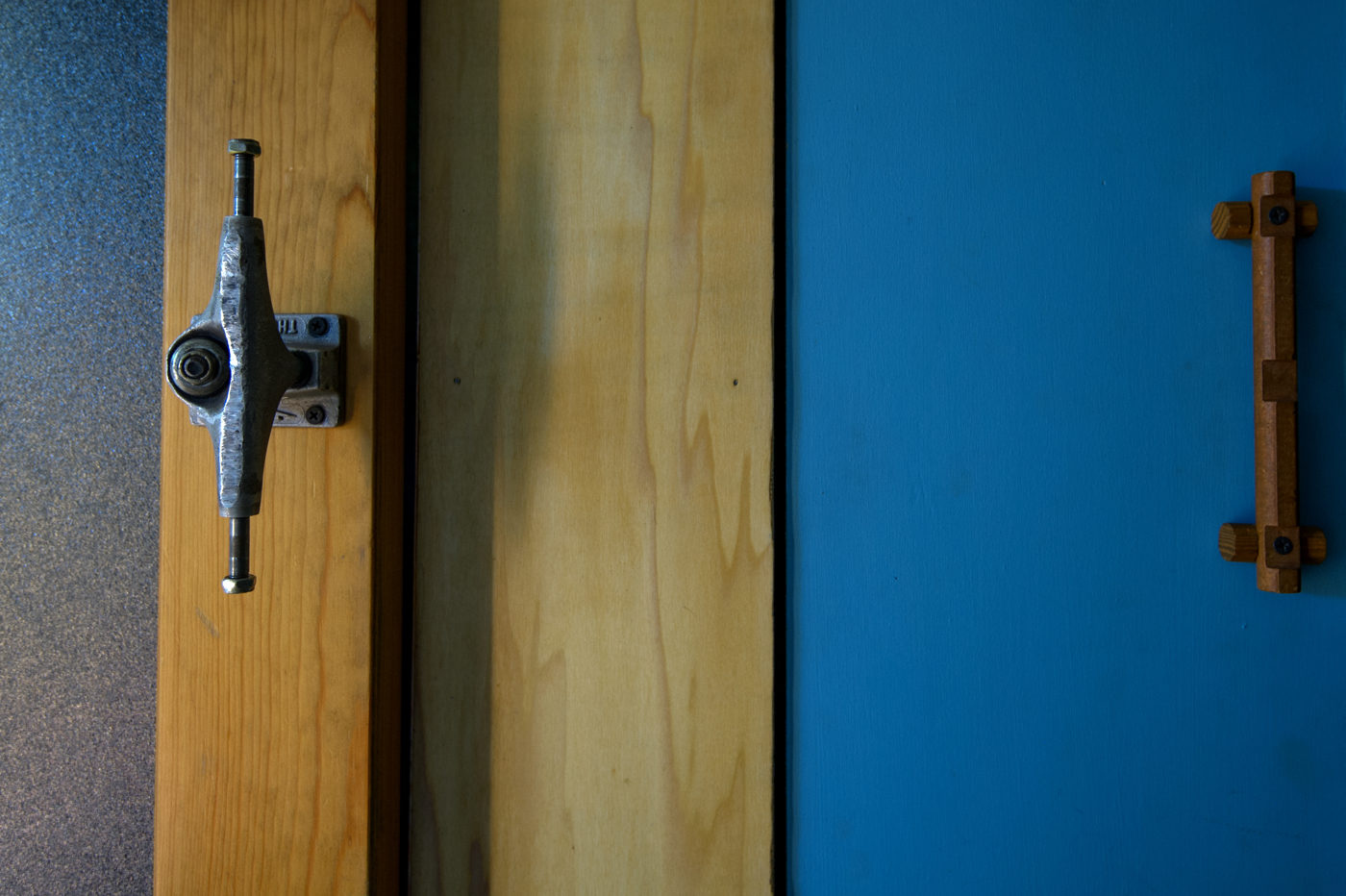
Diedricksen’s yard, home to six tiny structures in progress (including the box truck and a tiny office his 10-year-old son is building) is, at first, an overwhelming collection of detritus. Diedricksen doesn’t see it like that, though.
Where there’s a stack of old doors, he sees fine oak craftsmanship and new entryways. A drawer full of various nuts and bolts holds the key to any one of thousands of unseen pickles. Discarded, rotting fencing, with a little tender loving care, is the interior wall to a new tiny house.
Still, Diedricksen holds no sentimentality toward his method.
“I call it the madness,” he said, looking around his yard. “But there’s something really cool about picking up this thing someone else threw away and turning it into something you can use. It’s like, ‘Take that!’” Diedricksen said, adding a triumphant expletive to the end.
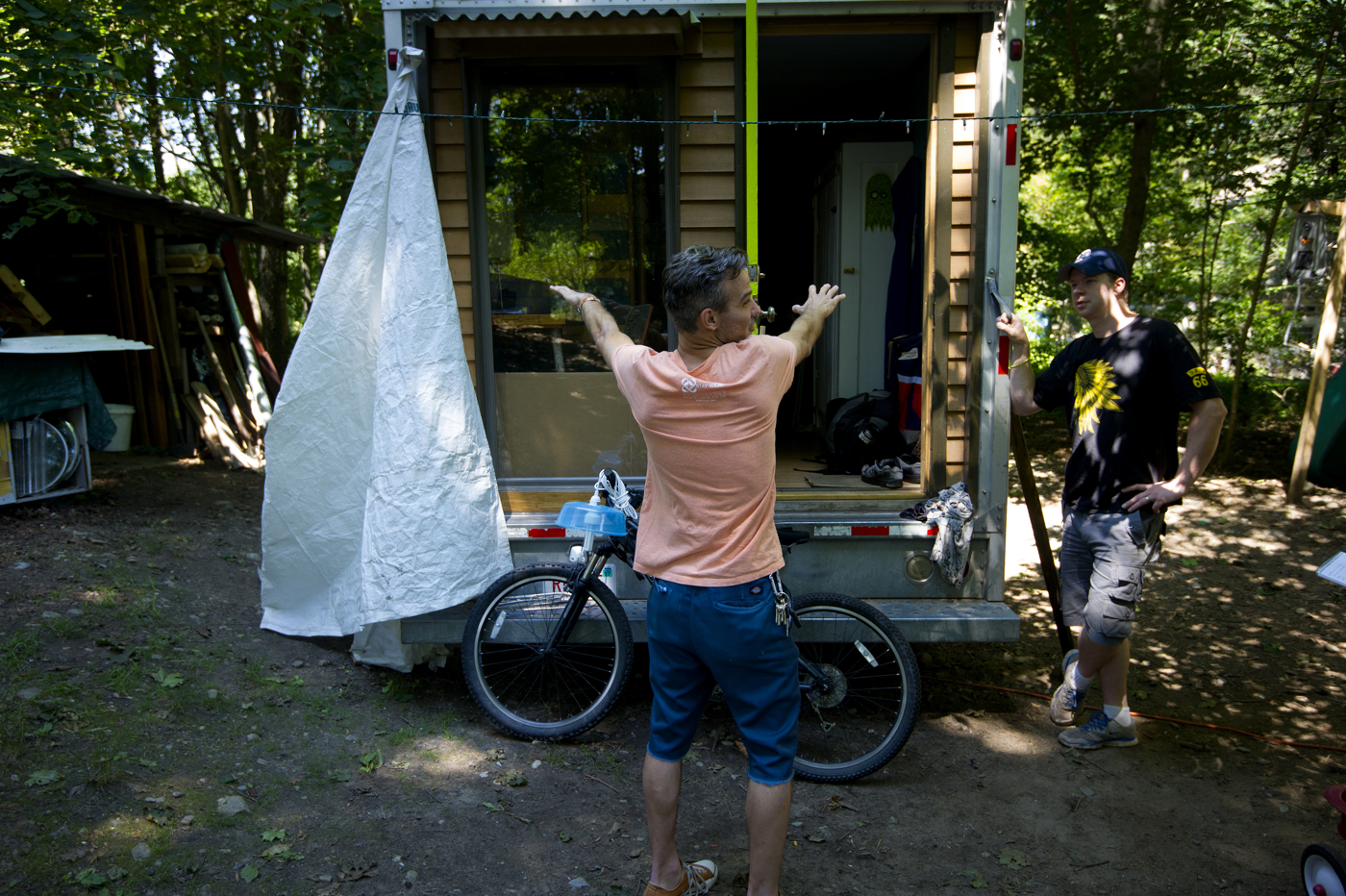
‘I’ve always been into tinkering’
Though tiny houses have exploded onto the scene in recent years, building them is nothing new for Diedricksen. “I’ve always been into tinkering,” he said.
Nor is the idea of living small. He recalled taking childhood drives with his family through a quiet beach neighborhood in Madison, Connecticut, called “Dud’s Village.” The streets have a 5 mph speed limit and homes include tiny cottages, trailers, and semi-circular Quonset huts from the World War I era. For his 10th birthday, Diedricksen got the book Tiny Houses, by Lester Walker.
“All of this—driving up and down the streets in Dud’s Village, getting the book—made me realize that you could pretty much transition from forts as a kid to forts as an adult,” he said.
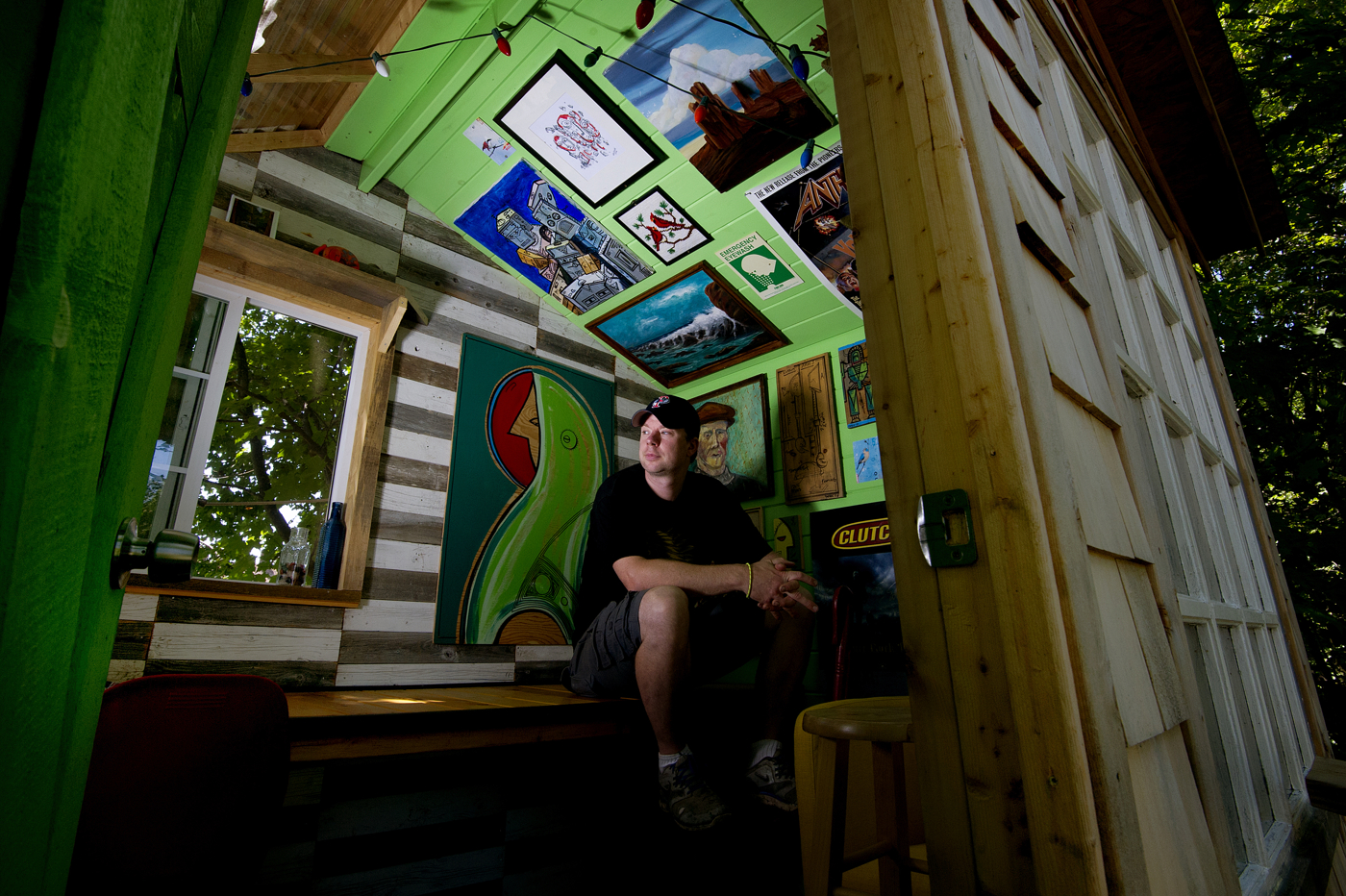

At Northeastern, Diedricksen continued to tinker—modifying his loft-style bed in his residence hall, for example—while following his other passions for music and communications.
As a student, he worked as a DJ at Northeastern radio station WRBB. After graduation, he took a job as a DJ at WBCN, a now-defunct local rock station. All the while, he continued to tinker.
“A lot of the time, I let the materials lead the way”
In 2009, Diedricksen launched his first blog about tiny houses. It was only the sixth such site on the topic at the time, he said. The same year, he self-published a book on the topic as well, titled, Humble Homes, Simple Shacks, Cozy Cottages, Ramshackle Retreats, Funky Forts, and Whatever the Heck Else We Could Squeeze in Here.
The title is a fine example of Diedricksen’s sense of humor, but also his approach to tiny houses. A treehouse he built on his property boasts a clear plastic wall first for its durability, second because it lets in plenty of light, and third, because, well, that’s what Diedricksen had available.
“A lot of the time, I let the materials lead the way,” he said. Though this often means delaying certain phases of a build until he finds the right materials, the wait is worth it. “It’s not only a way to infuse individuality and character into these houses, but it cuts down the cost tremendously,” Diedricksen said. “It’s a creative challenge.”

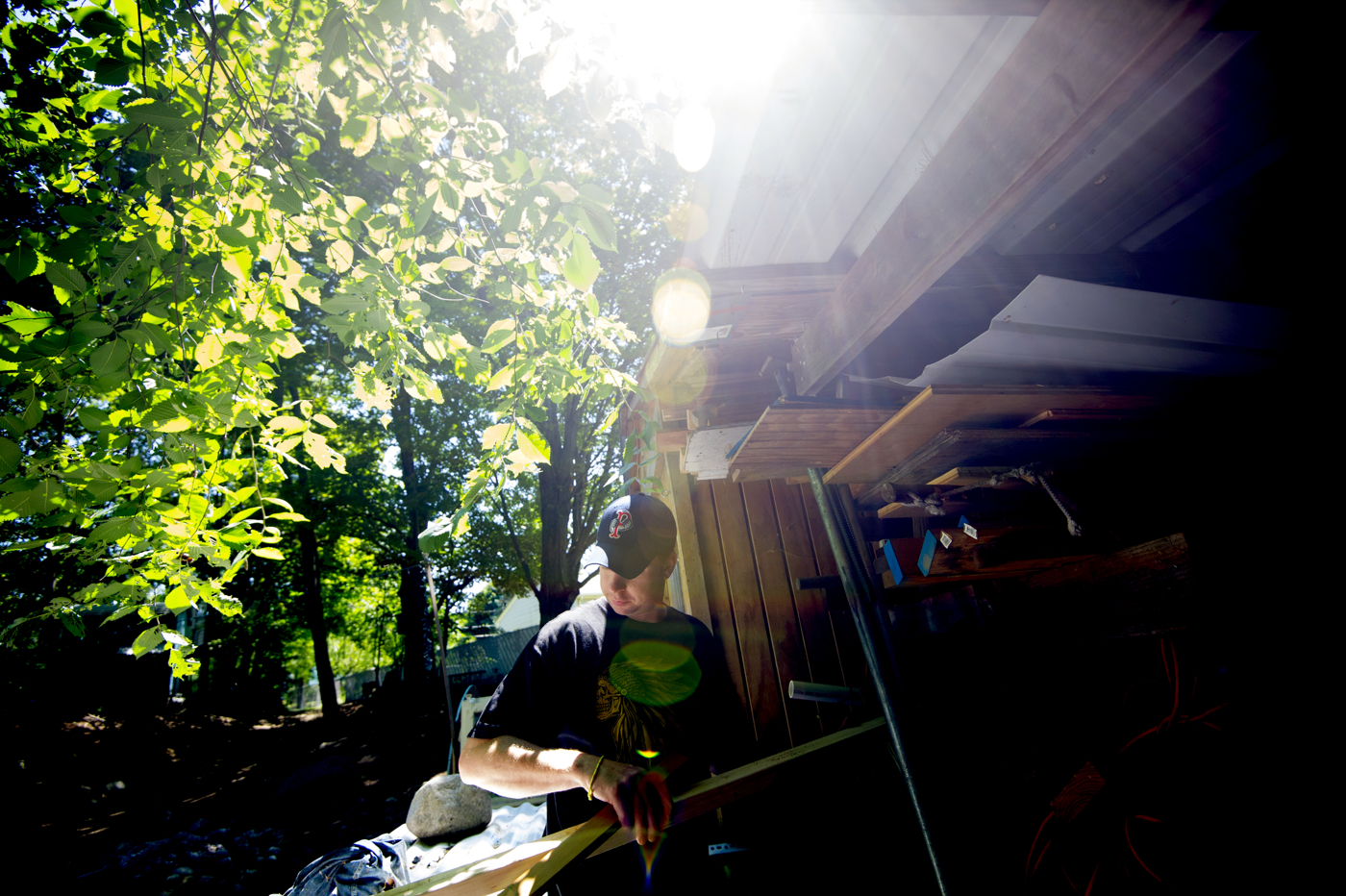
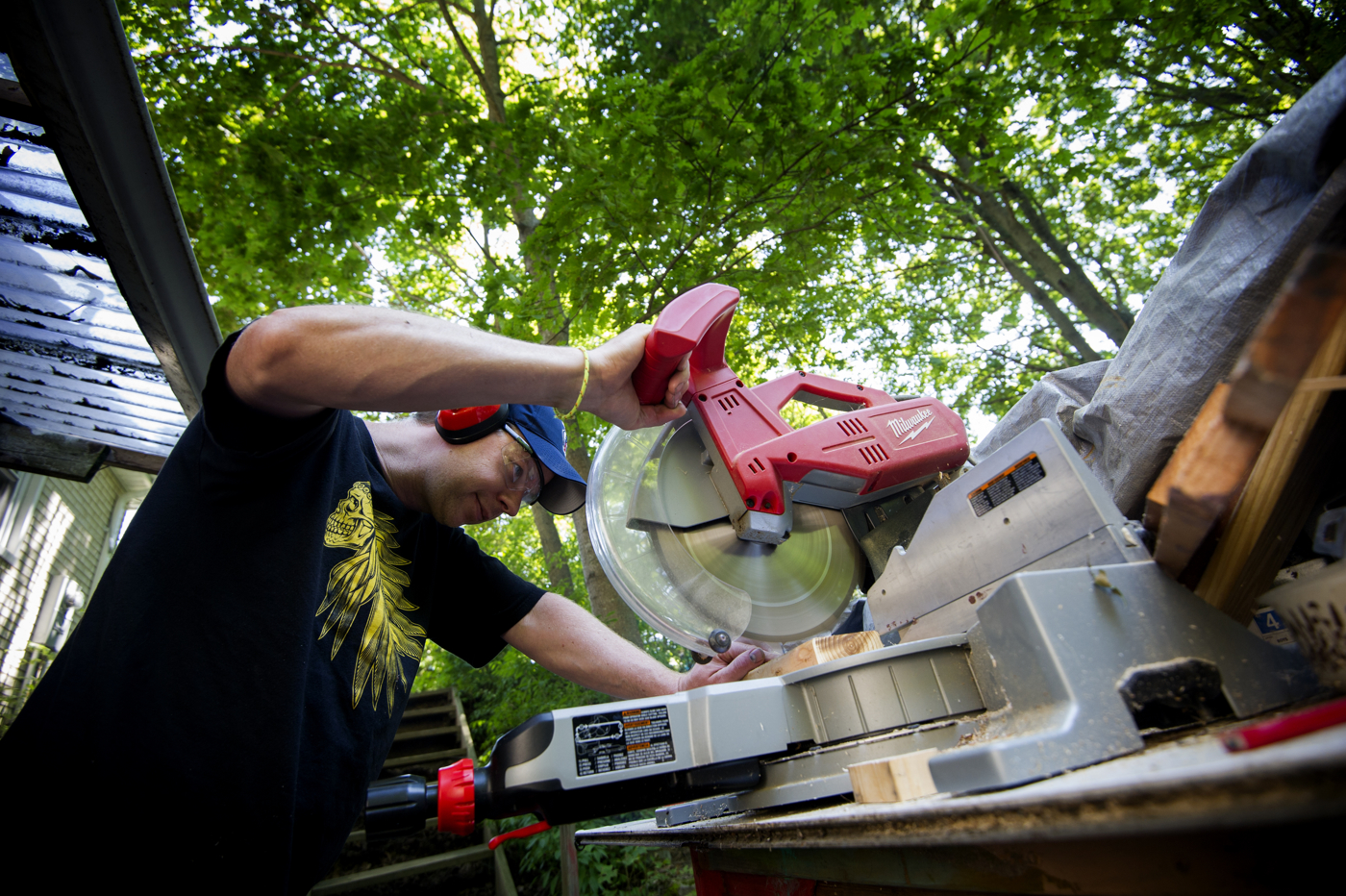
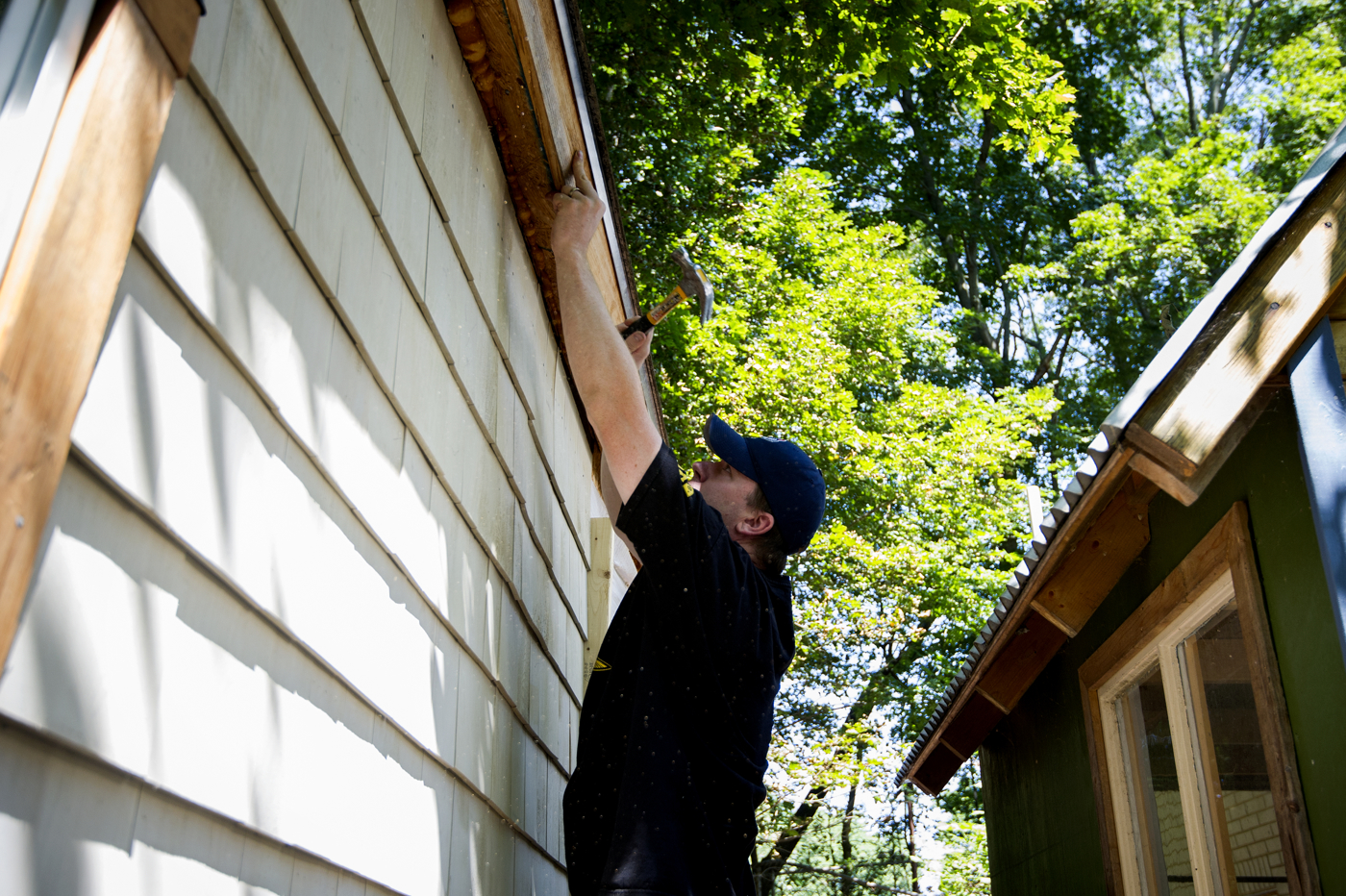
From ‘unusual’ to ‘useful’
His latest project with Eaves—the two graduated Northeastern in the same year, but only recently realized their connection thanks to an introduction by a mutual friend—involves the box truck build and a focus on reuse.
Eaves, who studied journalism at Northeastern and is now a documentary filmmaker, is building the box truck to be a home and a reuse education center. Everything in the build is recycled, and Eaves hopes his film about the process will serve as a stalwart against global waste.
For two people to build a house in a 7-by-8 space is quite a challenge. According to Eaves, “A lot of times we’re crunched up in yoga positions trying to reach whatever we’re working on.” But by the end, they’ll have a cozy home and a film to show for it. And, with one external side of the truck staying white, a screen to show it on, no less.
It’s these types of challenging builds that inspire Diedricksen. “I’ve always done this as a hobby, and now being able to do it full-time is just really fun,” he said. “Finding things that are unusual, that are whimsical, and turning them into something useful? It’s just a lot of fun.”






